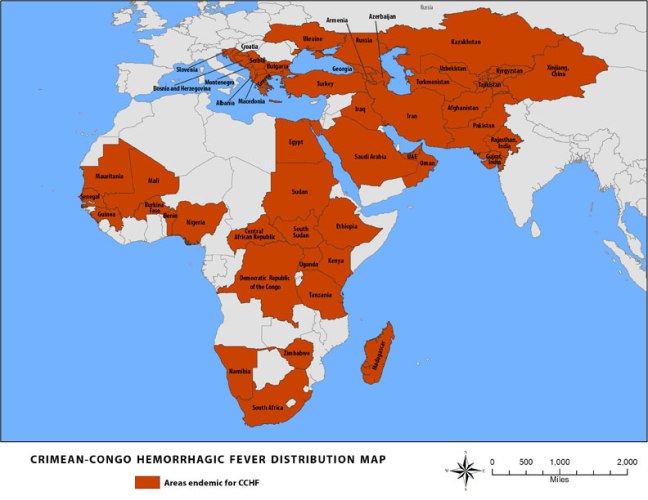Crimean-Congo hemorrhagic fever is perhaps one of the worst named viruses in the world. Here is a map illustrating this fact:

Shout out to google images and the CDC for such a lovely map. Note that Crimea
If you’ll notice, CCHF is endemic to way more than just Crimea and Congo. Allegedly it showed up first in Crimea, and was called Crimean Hemorrhagic Fever. But about 20 years later, the same virus showed up in the Congo. Then it spread to literally everywhere else and now we have an inaccurately named virus. Super. Why do you care?
Because we’re all going to die.
Though, likely not from CCHF because the US is not an endemic region. But two patients in Oman have died of this tick-borne disease. Then, days later the Omani government denied rumors of an active CCHF infection in the country, despite an alleged 5 deaths from the disease this year. Neat!
Additionally, two cases have been recorded recently in regions of Pakistan. So CCHF is definitely still alive and infecting people. Reservoirs of the virus include cattle, sheep and goats. This means that those working in close quarters with these animals, particularly slaughterhouse workers, are at a higher risk than the average human. But given that ticks can also transmit the disease, it’s hard to say who is at risk. Because ticks are everywhere and they infect everything. This is not fun, considering that symptoms of the disease include exciting options like high fever, back pain, vomiting, joint pain and red eyes. The onset of the disease is sudden, and long-term effects can actually change the patient’s mood and sensory perception. So, overall, not a fun disease. Fatality rates range between 9 and 50%, and most treatment is just supportive. However, the virus has shown susceptibility to Ribavirin. That’s some good news, at least.
